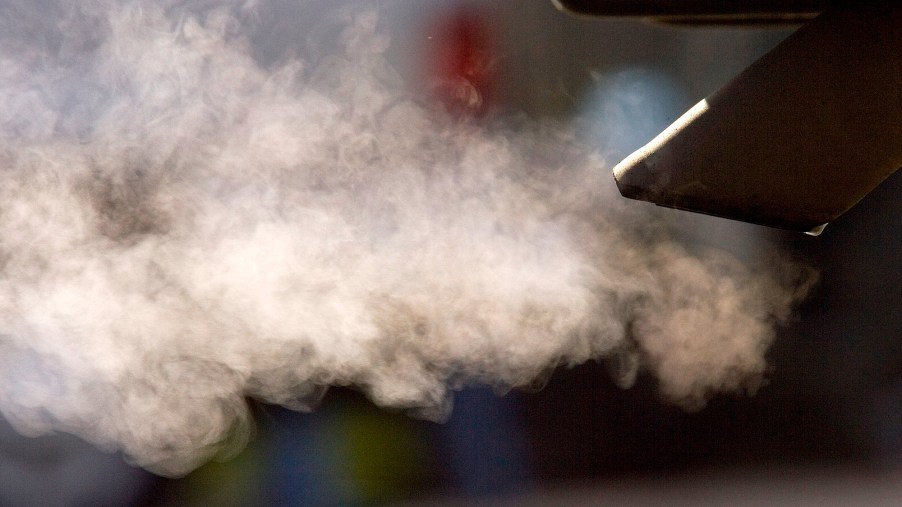
Do You Need to Warm Up Your Car Before Driving It?
Some sources say that cars no longer require several minutes to warm up before driving. However, a few old-school mechanics maintain that warming up your car before driving is preventative maintenance. So, which is it? To warm or not to warm? That is the question.
From carburetors to fuel injection
Michael Scott wrote in his book The Alchemyst: “At the heart of every legend there is a grain of truth.”
Or, in the case of whether to warm up your car, a drop of truth.
Before the mid-’90s, most vehicles used a carburetor, a mechanism that blends air and fuel for internal combustion engines in a suitable air-to-fuel ratio. However, beginning as early as the late-’80s and ’90s, American automakers began switching to fuel-injected engines.
If you don’t believe us, take it from the Washington Post. It reports that “older cars — which relied on carburetors as a crucial engine component — did need to warm up to work well, according to several auto industry experts. Without warming up, the carburetor would not necessarily be able to get the right mix of air and fuel in the engine — and the car might stall out.”
On the other hand, fuel-injected engines have sensors that ensure the engine gets the perfect mixture of fuel and air, no matter how cold the winter morning.
Nonetheless, some experts still argue that as temperatures drop, the engine oil becomes thicker. As a result, components such as bearings, pistons, rings, valve stems, and cylinder bores suffer damage over time if an engine’s RPMs increase before the oil consistency allows it to lubricate them.
But this applies to only carburetor-equipped engines — without injectors, these engines run better once the “blood” starts flowing. Manufacturers today design vehicles with utmost efficiency in mind. So warming up your newer car in the winter is a waste of gas.
Experts say you should warm up your car for no longer than 30 seconds
According to the U.S. Department of Energy’s Energy Saver, “In the winter, most manufacturers recommend driving off gently after about 30 seconds. The engine will warm up faster being driven, which will allow the heat to turn on sooner, decrease your fuel costs, and reduce emissions.”
Remember, unless you’re driving a 1964 Thunderbird, your technologically advanced vehicle won’t blow a gasket backing out of the driveway before allowing the oil to flow faster.
However, Natural Resources Canada suggests warming up your car longer in freezing weather. “With today’s computer-controlled engines, even on cold winter days, usually, no more than two to three minutes of idling is enough warm-up time needed for the average vehicle before starting to drive,” the Washington Post reported.
Energy Saver also suggests switching the engine off if you’ll be sitting for longer than 10 seconds. “Idling can use a quarter to a half-gallon of fuel per hour, depending on engine size and air conditioner use, adding up to three cents of wasted fuel a minute,” the site states. Whoever invented the auto idle stop function on newer vehicles deserves a Nobel Prize.
They saved us from the tedious responsibility of doing “key on, key off” a thousand times a day. Not to mention saving us from tossing three whole cents into the wind per minute while waiting in the Taco Bell drive-thru. Believe it or not, you’d have an extra $157 by year’s end, assuming you drove your car 24 hours a day, seven days a week, for a year.
Unlike their predecessors, new cars hate to idle
You know the old saying, “Use it or lose it.” Well, if you drive a vehicle manufactud after the Y2K hysteria, you might be losing more than you think. Allowing your car to idle continuously has some negative impacts, such as burning through oil faster. This results in the need for more frequent servicing and oil changes. It also drains the car’s battery and causes spark plugs to go bad faster. In other words, unless you live in Oymyakon, your car has no seasonal preference.
Of course, if you own a Tesla Model 3, Ford Mustang Mach-E, or other EV, such archaic practices must seem a lifetime ago.


